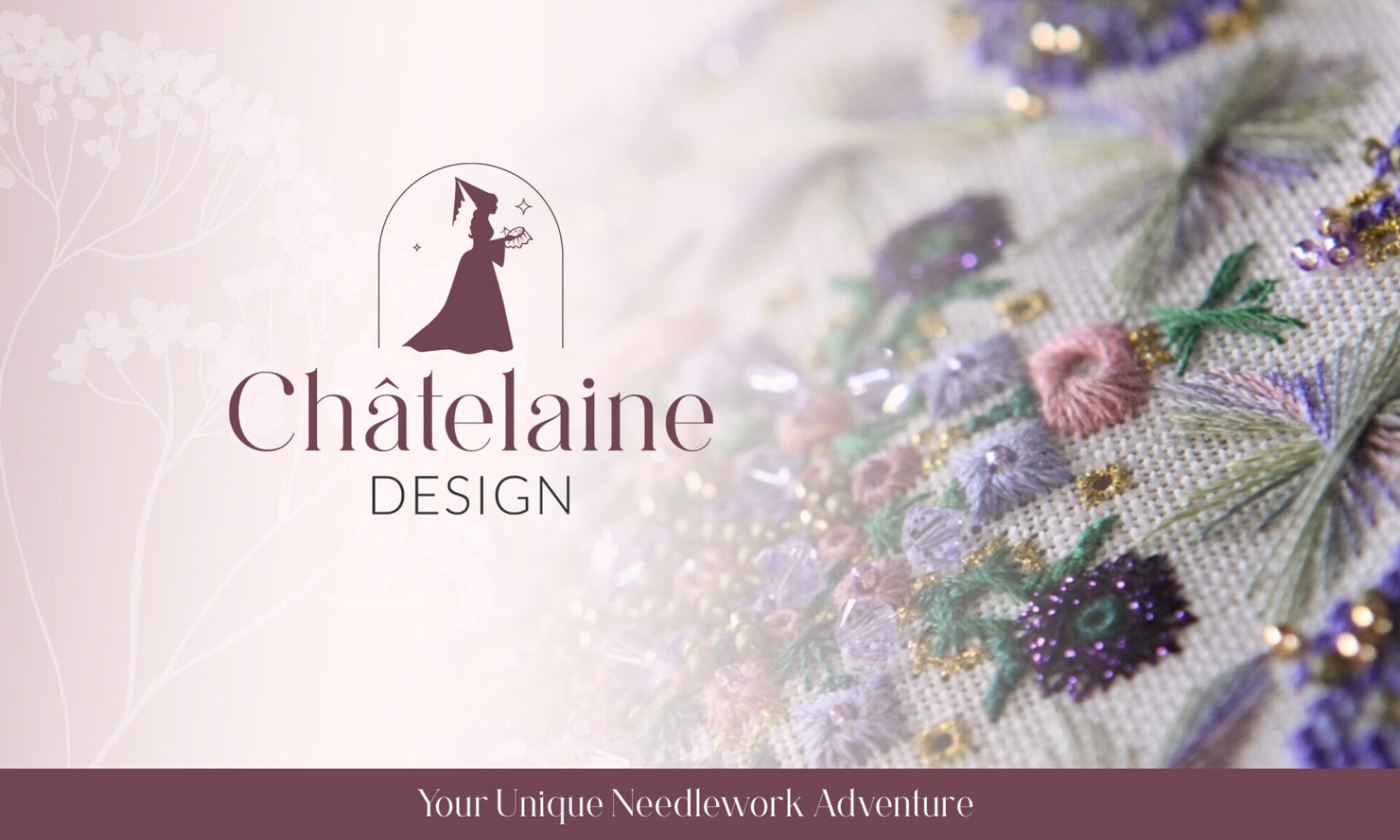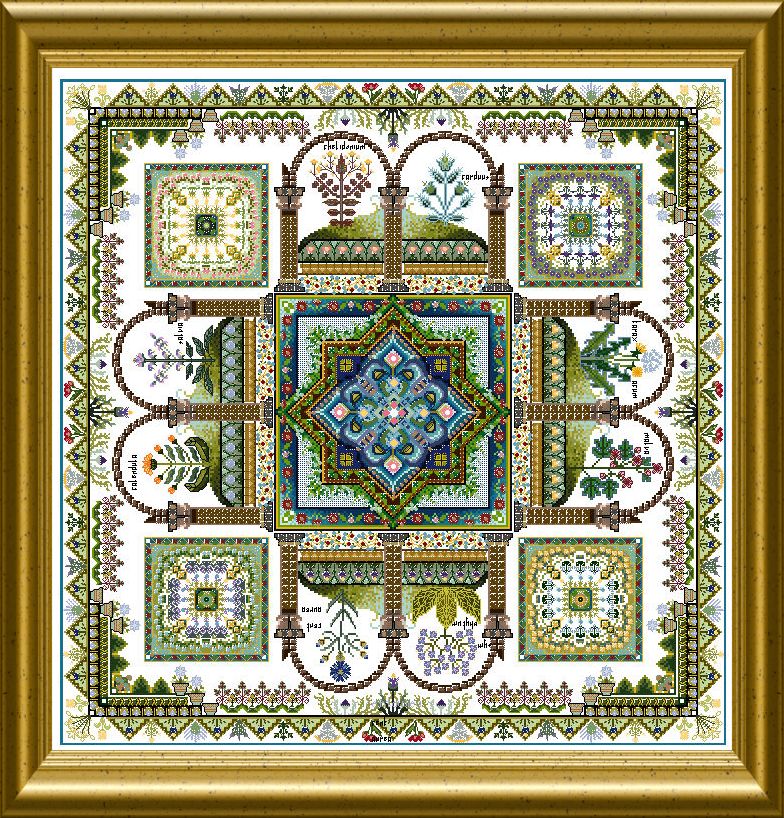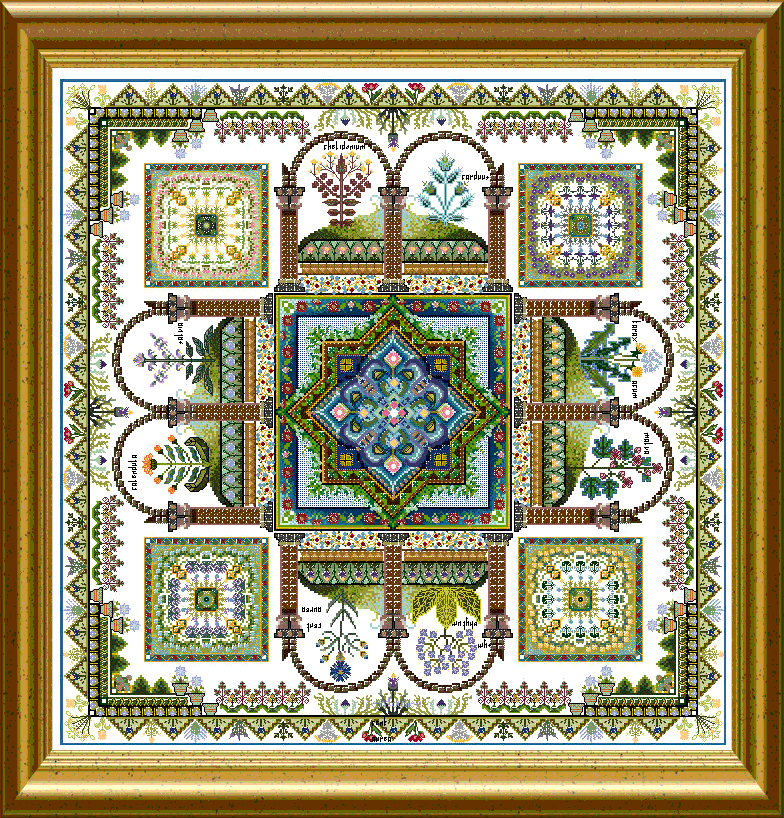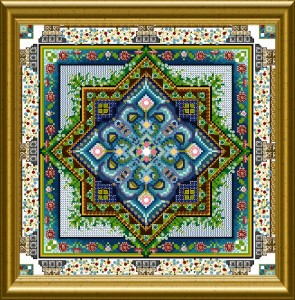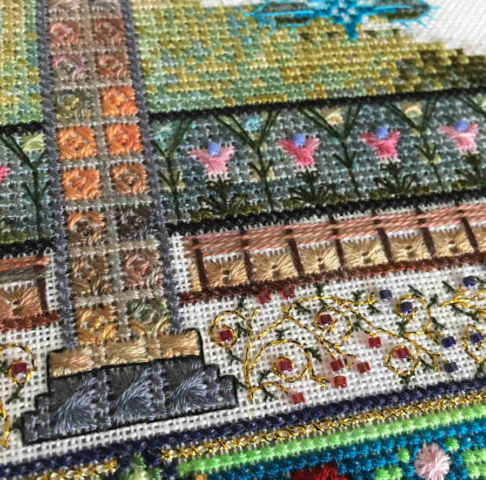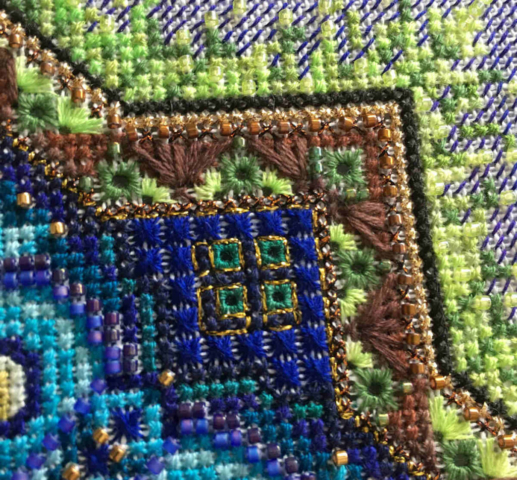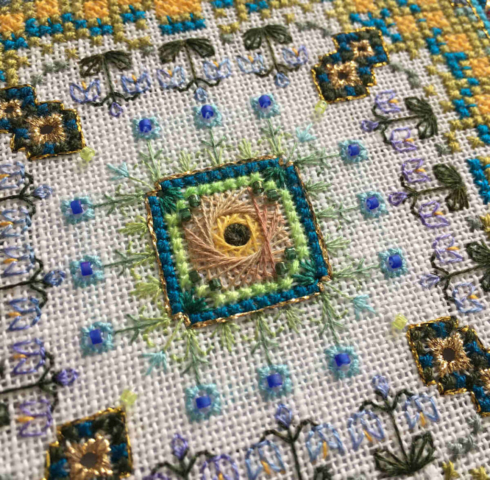OCF – ONL 072
This is the first of a series of Medieval gardens, which often had to be useful and were planted to serve a certain purpose – like this one: It features herbs for the kitchen and, even more, healing.
The average herb – and there were many, which are still in use today, (or again in use) ! It was used to make meals tastier, as salt was rare and expensive, Thyme, for example, was used to conserve raw meat and hinder it to rot. Many of the tasty herbs were remedies as well – Peppermint was lovely in salads, but as well healed a sick stomach and nausea during pregnancy. And so on.
Choose the color of your fabric
Click on the colors below to see a preview of this design on different fabric background colors you might consider. For more options please visit The Design and Fabric Viewer.
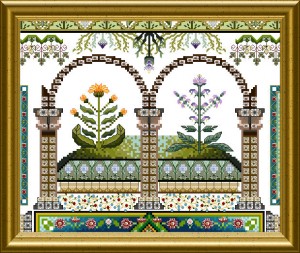 Of course, you will use an array of pretty and vivid colors, in cotton and silk, like floss and perle, braid and metallic… together with beads and crystals for a rich and tactile look.
Of course, you will use an array of pretty and vivid colors, in cotton and silk, like floss and perle, braid and metallic… together with beads and crystals for a rich and tactile look.
Many Herbularia were planted in or close to convents because monks and nuns had the knowledge to use them, brew delicate liquors or mix tisanes and concoctions for sick people. Besides the healing ingredients, many of these plants feature beautiful blooms, so they had a place to be seen, tasted and smelled.
Size: The mere design size is 333 x 333 stitches.
Recommended Fabric: 14/28 ct or 16/32ct in white, cream, unbleached, black… or whatever is your favorite for the background color.
Materials: You can check the material here.
Please click on the images below for more inspiration from the Community!
